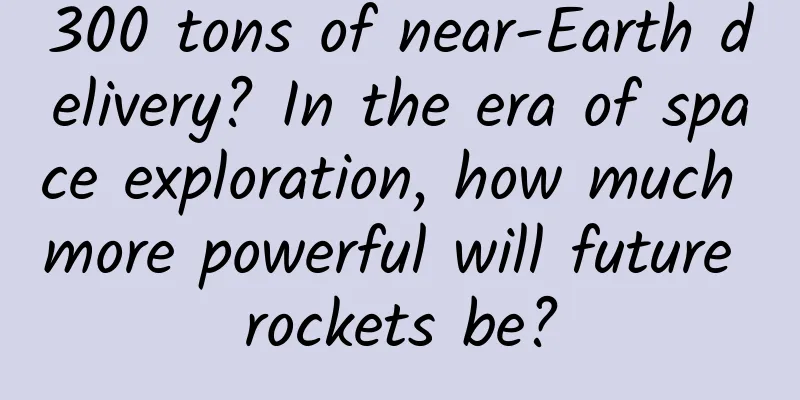Who created the largest cycle on Earth? It's right next to you!

|
In recent years, "carbon neutrality" and "carbon peak" have become terms that appear frequently in various media, and people, especially oil workers, are paying more and more attention to them. So how do we understand their true meaning? What are the paths to achieve them? This has to start with the carbon pool and carbon cycle on Earth. Earth's Carbon Pool Carbon is one of the main elements in living matter and an important component of organic matter. There are four major carbon pools on Earth, namely the atmospheric carbon pool, the ocean carbon pool, the terrestrial ecosystem carbon pool, and the lithosphere carbon pool. Carbon elements are constantly circulating between the major carbon pools such as the atmosphere, land, and ocean. Atmospheric carbon pool. The size of the atmospheric carbon pool is about 730 billion tons, which is the smallest among the major carbon pools, but it is enough to serve as a link and bridge between the marine carbon pool and the terrestrial ecosystem carbon pool. The carbon content in the atmosphere directly affects the material cycle and energy flow of the entire Earth system. The carbon-containing gases in the atmosphere mainly include carbon dioxide, methane and carbon monoxide. Compared with the ocean and terrestrial ecosystems, the amount of carbon in the atmosphere is the easiest to calculate and the most accurate. Since carbon dioxide has the largest content and is the most important among these gases, the concentration of carbon dioxide in the atmosphere can often be regarded as an important indicator of the carbon content in the atmosphere. The main focus of the so-called "carbon neutrality" and "carbon peak" lies here. Marine carbon reservoir. The ocean has the ability to store and absorb carbon dioxide from the atmosphere. Its soluble inorganic carbon content is about 37.4 trillion tons, which is more than 50 times the carbon content in the atmosphere. The ocean determines the concentration of carbon dioxide in the atmosphere. Carbon dioxide in the atmosphere is constantly exchanged with the surface of the ocean, so that the atmosphere and the surface of the ocean can quickly reach a balance. 30% to 50% of carbon emissions caused by human activities are absorbed by the ocean, but the ocean's ability to buffer changes in atmospheric carbon dioxide concentration is not unlimited. Because human activities make the rate of carbon emissions several orders of magnitude greater than the rate of cation supply, as the concentration of carbon dioxide in the atmosphere continues to rise, the ocean's ability to absorb carbon dioxide will inevitably gradually decrease. Terrestrial ecosystem carbon pool. The amount of carbon accumulated in terrestrial ecosystems is about 2 trillion tons, of which the amount of carbon accumulated in soil organic carbon pool is about twice that of vegetation carbon pool. Terrestrial ecosystem carbon accumulation mainly occurs in forest areas. Forest ecosystems play an important role as "buffers" and "valve" in the biogeochemical processes of the geosphere and biosphere. About 80% of above-ground carbon accumulation and about 40% of underground carbon accumulation occur in forest ecosystems, and the rest are mainly stored in cultivated land, wetlands, tundra, alpine grasslands, deserts and semi-deserts. Carbon accumulation mainly occurs in tropical regions. More than 50% of the world's vegetation carbon and nearly 1/4 of soil organic carbon are stored in tropical forests and tropical grassland ecosystems, about 15% of vegetation carbon and nearly 18% of soil organic carbon are stored in temperate forests and grasslands, and the remaining terrestrial carbon accumulation mainly occurs in northern forests, tundra, wetlands, cultivated land, deserts and semi-deserts. The largest carbon reservoir on Earth is the lithospheric carbon reservoir, in which fossil fuels such as oil, natural gas and coal, which are well-known to people, contain about 99.9% of the total carbon on Earth. The carbon in these two reservoirs moves slowly and actually acts as a storage reservoir. Carbon exists mainly in the form of carbonates in the lithosphere, with a total amount of about 2.7 trillion tons; in the atmosphere, it exists in the form of carbon dioxide and carbon monoxide; in the hydrosphere, it exists in various forms; and in the biobank, there are hundreds of organic substances synthesized by organisms. The existence of these substances is regulated by various factors. The various carbon cycles The carbon cycle refers to the phenomenon that carbon is exchanged in the biosphere, lithosphere, hydrosphere and atmosphere of the earth and circulates continuously with the movement of the earth. Since carbon is the basis of most substances on the earth, its cycle can be called the greatest cycle on the earth. The carbon cycle on Earth is mainly manifested in that green plants in natural ecosystems absorb carbon dioxide from the air, convert it into carbohydrates through photosynthesis and release oxygen. At the same time, carbon dioxide is released into the atmosphere through biogeochemical cycle processes and human activities. Green plants in natural ecosystems convert the absorbed carbon dioxide into carbohydrates in plants through photosynthesis, and then into carbohydrates in animals through the food chain. The respiration of plants and animals converts part of the carbon in their bodies into carbon dioxide and releases it into the atmosphere. It takes about 20 years for the carbon dioxide in the atmosphere to circulate once. Another part of the carbon constitutes the organisms of living things and is stored by themselves. After the death of plants and animals, most of the remains of plants and animals are eventually released into the atmosphere in the form of carbon dioxide through the decomposition of microorganisms. A small part is buried in sediments before being decomposed by microorganisms. After a long period of time, it is converted into fossil fuels (coal, oil, natural gas, etc.). When these fossil fuels are weathered or burned as fuel, the carbon in them is converted into carbon dioxide and released into the atmosphere. Human consumption of large amounts of fossil fuels has a significant impact on the carbon cycle. The carbon cycle in the biosphere is mainly manifested in the absorption of carbon dioxide from the atmosphere by green plants, which is converted into glucose and released oxygen through photosynthesis with the participation of water. Organisms then use glucose to synthesize other organic compounds. Organic compounds are transferred through the food chain and become part of other organisms such as animals and bacteria. Part of the carbohydrates in organisms are oxidized into carbon dioxide and water through respiration as energy for the metabolism of organisms, and the energy stored in them is released. The vast majority of carbon in nature is stored in rocks in the earth's crust. Carbon in rocks decomposes due to various natural and artificial chemical reactions and enters the atmosphere and oceans. At the same time, dead organisms and other carbon-containing substances are constantly returned to the earth's crust in the form of sediments, thus forming part of the global carbon cycle. The geobiochemical cycle of carbon controls the migration of carbon between surface or near-surface sediments and the atmosphere, biosphere and oceans. The rate at which plants and photosynthetic microorganisms absorb carbon from the atmosphere through photosynthesis is roughly equal to the rate at which they release carbon into the atmosphere through biological respiration. The content of carbon dioxide in the atmosphere was quite stable before it was disturbed by human activities. Oil and coal are byproducts of excess carbon fixation. Once used by humans, they will release a huge amount of carbon. There is also a carbon cycle between the atmosphere, ocean and land. Carbon dioxide can enter seawater from the atmosphere and enter the atmosphere from seawater. This carbon exchange occurs at the interface between the atmosphere and seawater. Carbon dioxide in the atmosphere can also dissolve in rainwater and groundwater to become carbonic acid, and is transported to the ocean by rivers through runoff. These carbonates form limestone, dolomite and carbonaceous shale through the sedimentation process. Under chemical and physical effects, the carbon contained in these weathered rocks is released into the atmosphere in the form of carbon dioxide. Volcanic eruptions can also cause some organic carbon and carbon in carbonates to re-enter the carbon cycle. Although the destruction of carbonaceous rocks has little impact on the cycle in the short term, it is important for the balance of carbon over millions of years. Impact of human activities on the carbon cycle Human activities mainly refer to the burning of fossil fuels to obtain energy, which produces a large amount of carbon dioxide. From 1949 to 1969, the amount of carbon dioxide generated increased by about 4.8% per year due to the burning of fossil fuels and other industrial activities, resulting in an increase in the concentration of carbon dioxide in the atmosphere. This has destroyed the original balance of nature and led to abnormal climate. A small part of the carbon dioxide generated by the burning of fossil fuels and discharged into the atmosphere can be dissolved by seawater, but the increase in dissolved carbon dioxide in seawater will cause changes in the acid-base balance and carbonate dissolution balance in seawater. Small amounts of carbon monoxide are produced by the incomplete combustion of fossil fuels. Natural processes also produce carbon monoxide. Carbon monoxide has a short lifetime in the atmosphere, where it is mainly absorbed by microorganisms in the soil or converted to carbon dioxide through a series of chemical or photochemical reactions. Human activities have released a large amount of carbon dioxide into the atmosphere, of which about 57% is absorbed by natural ecosystems and about 43% remains in the atmosphere. Compared with pre-industrial times, the concentration of carbon dioxide in the global atmosphere has increased significantly, leading to the warming of the global climate system. Global warming is the result of climate change caused by human social activities. "Carbon" refers to natural resources composed of carbon elements such as oil, coal, and wood. The more "carbon" is consumed, the more "carbon dioxide" (the culprit of global warming) is produced. At the same time, global warming is also changing (affecting) people's lifestyles and bringing more and more problems. The purpose of achieving "carbon neutrality" and "carbon peak" is to minimize the damage caused to the earth and human society by excessive carbon emissions. Author: Wang Darui |
<<: Exploration | The speed limit of the universe: Why can't we surpass that shining photon?
Recommend
Sales volume of branded smartphones in the Chinese market in July: OPPO ranked first, Honor ranked third, and Xiaomi ranked fourth
Unconsciously, we have come to the end of August....
Samsung Mobile Business President: To regain China's top customers are operators
According to the technology website ZDNet, after ...
If the "marathon runners" of the animal world, the slender-horned gazelle and the cheetah, had a speed contest, who would win?
When it comes to Tibetan antelopes, everyone prob...
Product Operation: 2 major ways to get started to accurately manage private domain traffic!
Ever since WeChat issued a notice to ban check-in...
Kuaishou advertising account has low traffic? Kuaishou advertising optimization guide!
What should I do if my Kuaishou information flow ...
Father’s Day copywriting is here, how can brands take advantage of it?
How to write Father’s Day copy ? Let us give you ...
"SEO training institution" SEO bookshelf exclusively reveals the black hat SEO order-taking industry!
"SEO training institution" SEO bookshel...
Come in and smell the "big orange cat"! Uncover the secrets of the jaguar's yesterday, today and tomorrow
When it comes to Jaguar, many people may think of...
The standards for preferential treatment recipients in 2022: Will the August 1 preferential treatment allowance continue to increase? How much will it increase specifically? Attached the latest news
In recent years, the state has been increasing th...
Never been so amazing! Hello, SuperTextView
[[189231]] 【Quoted from CoorChice's blog】 Int...
This year, the pension level for retirees will be increased by 4%! How to adjust specifically? Attached is the latest notice of 2022 adjustments!
Not long ago, my country launched the individual ...
Look at this fish, it is so "dog" and so fragrant
The protagonist of today’s article is fish, a typ...
Top 10 Flutter and React Native UI Libraries for 2020
Flutter Nowadays, Flutter plays a very important ...
New research: Are the sugar-free drinks we drink every day actually "attacking" our blood vessels?
In today's society where health awareness is ...
Dissecting Wanda e-commerce: How did it create O2O by spending 5 billion RMB and hundreds of millions of credit cards?
The bet between Wang Jianlin and Jack Ma has come...









